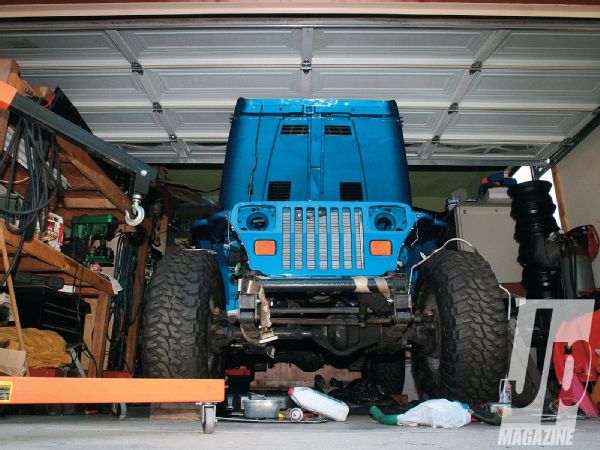
 Pete Trasborg
Brand Manager, Jp
Pete Trasborg
Brand Manager, Jp
In the first installation we showed you how we swapped a fuel-injected 5.7L Chevy V-8 into our '94 Wrangler in the parking garage under our office building. Well, since then, our office has come under new ownership that isn't nearly as gearhead-friendly as the old owners were, and we had to relocate the project. So Trasborg took it home and shoehorned it into his over-crowded, one-car garage to continue working on it.

Aside from the relocation, we are staying true to our original idea and installing the engine with hand tools and just keeping it simple. You can certainly still mimic what we do at home, or in your parking garage (as long as you don't get saddled with squares for owners).
For this installment, we went through and worked on tying up all the loose ends, plumbing the engine, fixing a couple of extra issues from buying a used motor, and generally learning a bunch about the LT1. This second-generation engine was a long time coming. When the LT1 debuted in the '92 Corvette, the engine it replaced had been around largely unchanged since 1955. You could make an argument against us here, but the fact is that this is the first time the distributor was moved and the water pump was no longer belt-driven. By letting the engineers loose on the venerable small-block V-8, the '92-'97 LT1 became a stepping stone to the later LS-series of engines.
When it came out in 1992, this engine put out about 50 hp more than the previous generation engine. It is also reverse-cooled, which means that the coolant flows from the radiator to the heads first to increase the resistance to detonation and allow higher compression ratios for more power and better emissions.
Another innovation was the optically-triggered Optispark engine-driven distributor, which indexes on the front of the cam. The Optispark features a disc with 360 slots in it and an optical trigger. The 360 slots fall one per every degree of engine revolution and allow much more accurate timing than the magnetic-pickup of the previous small-blocks. The down side to this ignition is its relatively low location on the front of the engine and the fact that it hides behind the water pump. For us Jeep guys, that means deep stream crossings or even a leaking water pump can kill the ignition. If that wasn't enough, in earlier models there was no way for condensation to get out of the distributor, which can lead to corrosion of terminals, poor idling, and rough running at higher RPMs, to name but a few possible issues.
Because of the changes from the small-block of yore, installing the LT1 took us down a notch. It wasn't that easy to figure out where everything needed to go, even with "before" pictures. So we did a lot of research, talked to friends who have done this before, and figured out a bunch of stuff that might help you out in the future.
PhotosView Slideshow









